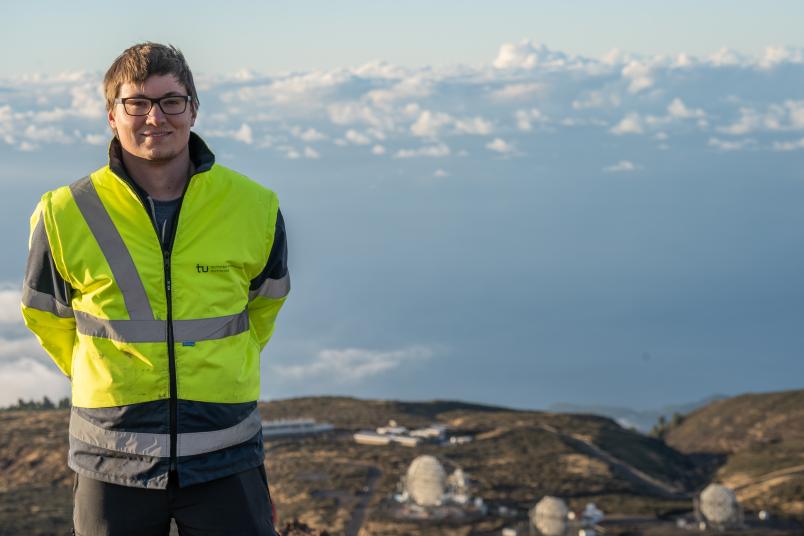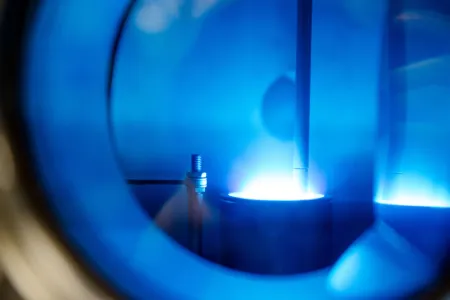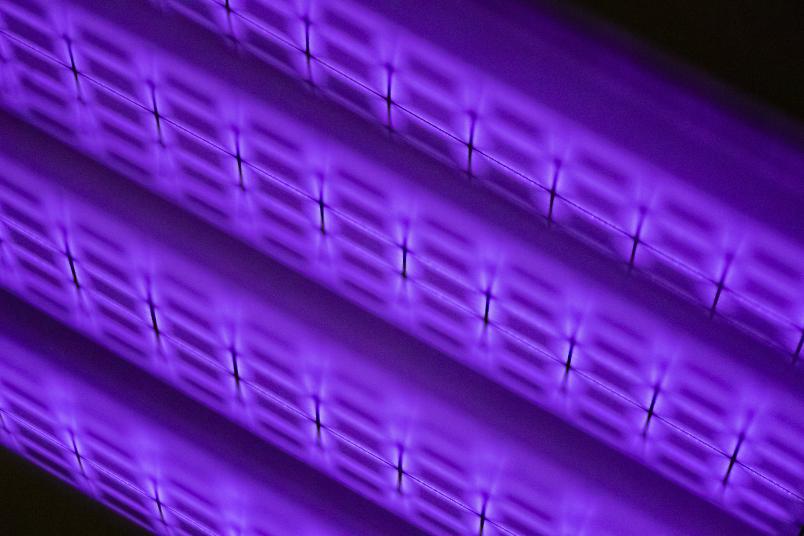
ASTROPARTICLE PHYSICS
Maximilian Linhoff is on the Trail of Cosmic Radiation
In this interview, Linhoff, a postdoctoral researcher in astroparticle physics, talks about his fascination for the Universe.
Dr. Maximilian Linhoff is conducting research in the field of astroparticle physics and, as a member of an international consortium, helping to expedite the assembly of new, powerful Cherenkov telescopes on La Palma in the Canary Islands and in Chile. With the help of such telescopes, physicists throughout the world are endeavoring to gain a better understanding of the cosmic radiation that strikes Earth’s atmosphere from space. In this interview, Maximilian Linhoff talks about his fascination for astroparticle physics, exciting discoveries and sustainable data management.
Dr. Linhoff, what is it about astroparticle physics that fascinates you?
One of the most fascinating things about astroparticle physics is the cosmic radiation that constantly pelts down on our Earth from space. Among other things, we use large-scale Cherenkov telescopes to identify where exactly this radiation originates from and what it is composed of. These also include the MAGIC telescopes on La Palma, which have been observing the night sky for 20 years and searching for short flashes of light. That is because whenever gamma radiation from the Universe hits the Earth’s atmosphere, it causes bluish Cherenkov light flashes.

The driving force behind my work is the big question of what the Universe is made of.
I’m currently part of a large international consortium that will assemble a new generation of particularly powerful Cherenkov telescopes on La Palma and in Chile – called the Cherenkov Telescope Array Observatory, in short CTAO. On the one hand, the driving force behind my work is the big question of what the Universe is made of – which we are also trying to answer with these large-scale experiments.
But my specific motivation each day is the fun of tackling and solving complex problems. One focus of my work is data analysis and the development of new data analysis software. After all, the extremely high data rates that the gamma-ray telescopes produce also have to be analyzed. In addition, there are overarching considerations that are keeping us busy above all in conjunction with the assembly of the CTA Observatory: What data does the overall system generate in the first place and how are they described and documented? At the present time, for example, we are defining a common data format for gamma astronomy, which all experiments can use to exchange their data with each other.
What was the most exciting discovery so far in your field?
I’ve been involved in astroparticle physics for about ten years now, so effectively since I started my Bachelor’s thesis. Astroparticle physicists endeavor to interconnect all kinds of information that they can obtain from the Universe in order to learn more and more about it. It is very exciting to see how the findings from different experiments – such as the LIGO gravitational wave observatory in the US, the IceCube neutrino observatory at the South Pole and the gamma-ray telescopes on La Palma – are merging more and more and together delivering an ever better picture.
A particularly exciting event was the GRB 190114C gamma-ray burst which the two MAGIC telescopes detected in early 2019. At the time, it was the most energetic burst ever recorded. For about 30 seconds after the gamma-ray burst, its afterglow was over a hundred times as strong as the Crab Nebula, the brightest known gamma-ray source in our Milky Way. The signal then weakened relatively quickly. After just half an hour, MAGIC was unable to measure any further emissions. With the measurements collected in 2019, it was possible to prove for the first time that such cosmic gamma-ray bursts glow in the very highest energy range, something which for a long time had only been assumed.
You are particularly committed to research data management. Why is this topic important to you?
Research data management is extremely important for the CTA consortium, in which I’m currently coordinating the Analysis and Simulations Working Group. CTA will be the first experiment in its field to make its data publicly available. This means that the data must be prepared in such a way that all researchers can use them for their analyses, including those who are not experts in the telescopes. The experiments to date are run in closed collaboration, where only the members have access to the data. But here, too, the data must be preserved in such a way that they are still usable for all kinds of analyses in the future.

The special thing about astronomy is that we observe and record unique events in the heavens that we cannot reproduce in the laboratory.
Because the special thing about astronomy is that we observe and record unique events in the heavens that we cannot reproduce in the laboratory. That is why the measurement data must be preserved in such a way that we will still be able to work with them in 30 years’ time.

